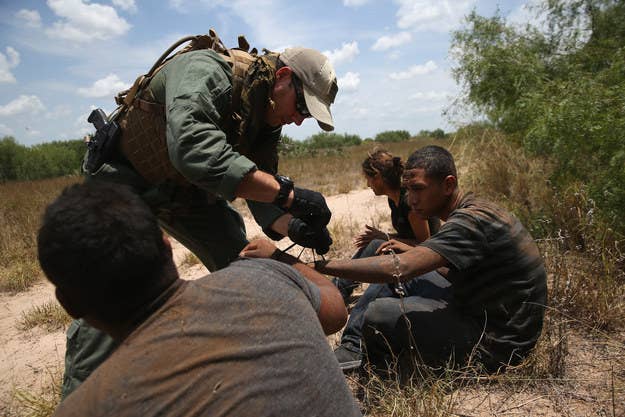
U.S. Customs and Border Protection (CBP), the nation's largest law enforcement agency, has completed the field phase of its body-worn camera study, in which agents were equipped with video recording devices during their daily border patrol work.
CBP's feasibility study, the first body cam study involving a large government agency, was initiated last year, following a 2013 comprehensive review of the Border Patrol's use of force, and amid allegations of abuse and violent misconduct.
During a phone call with reporters, Assistant Director Donna Twyford sketched the broad outlines of a CBP working group's yearlong review, but shared little about the agency's findings or the study's potential outcomes.
Asked by a BuzzFeed News reporter if the officers involved in the study experienced a change in the number of incidents in the field or in the number of complaints filed against them, Twyford declined comment. In a follow-up question, she said the agency's final report will be made public only at the discretion of CBP Commissioner R. Gil Kerlikowske.
The CBP chief will ultimately decide whether to implement a more robust pilot program or begin deploying body cams on a regular basis by the end of the year, she said.
Twyford did say that body cam video recordings from the study are subject to public records requests. This policy differs from that of South Carolina, the first state to require law enforcement officers to wear body cams, though the footage in that state is not subject to Freedom of Information Act requests. Gov. Nikki Haley signed the legislation earlier this year, a law partly provoked by the killing of Walter Scott, an unarmed black man, by Michael Slager, a white police officer, in North Charleston.
During a congressional hearing on the subject in May, Sen. Tim Scott, a Republican from South Carolina, urged his colleagues to consider implementing police body cameras as a means to protect the public, as well as officers. "Whether we are talking about Ferguson or Baltimore, Ohio or New York City, Tulsa, Oklahoma, or North Charleston, South Carolina, working together to find meaningful, long-term solutions is absolutely critical," he said.
According to Twyford, the test run involved 30 cameras and 90 agents and officers who volunteered for the program. In all, 1,895 video files were recorded, encompassing 163 gigabytes of data and spanning 271 hours of footage. The price of the cameras ranged from $200 to $1000, with lenses capturing a range of view from 60 to 130 degrees. The average battery life was 12 hours, but Twyford said that depending on the resolution, 4 to 6 hours was the experienced recording time. Twyford emphasized that the study was not a pilot program nor a process of selecting specific camera models, but a chance to evaluate the technology in general.
CBP consulted with local police departments that have or are implementing body cam programs, including the NYPD, the LAPD, and the Metro Police Department in Washington, D.C. "The report is still in draft form," Twyford said. "Even though it's in draft form, the working group does recognize the benefits that body-worn camera technology can offer in support of the CBP mission."
